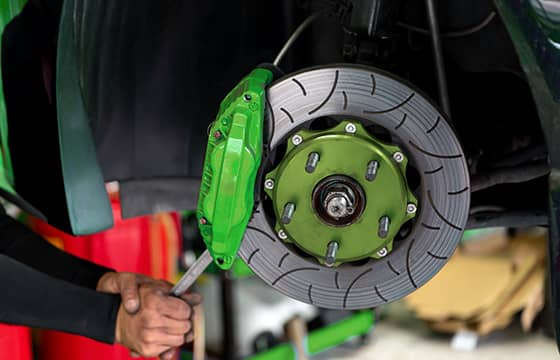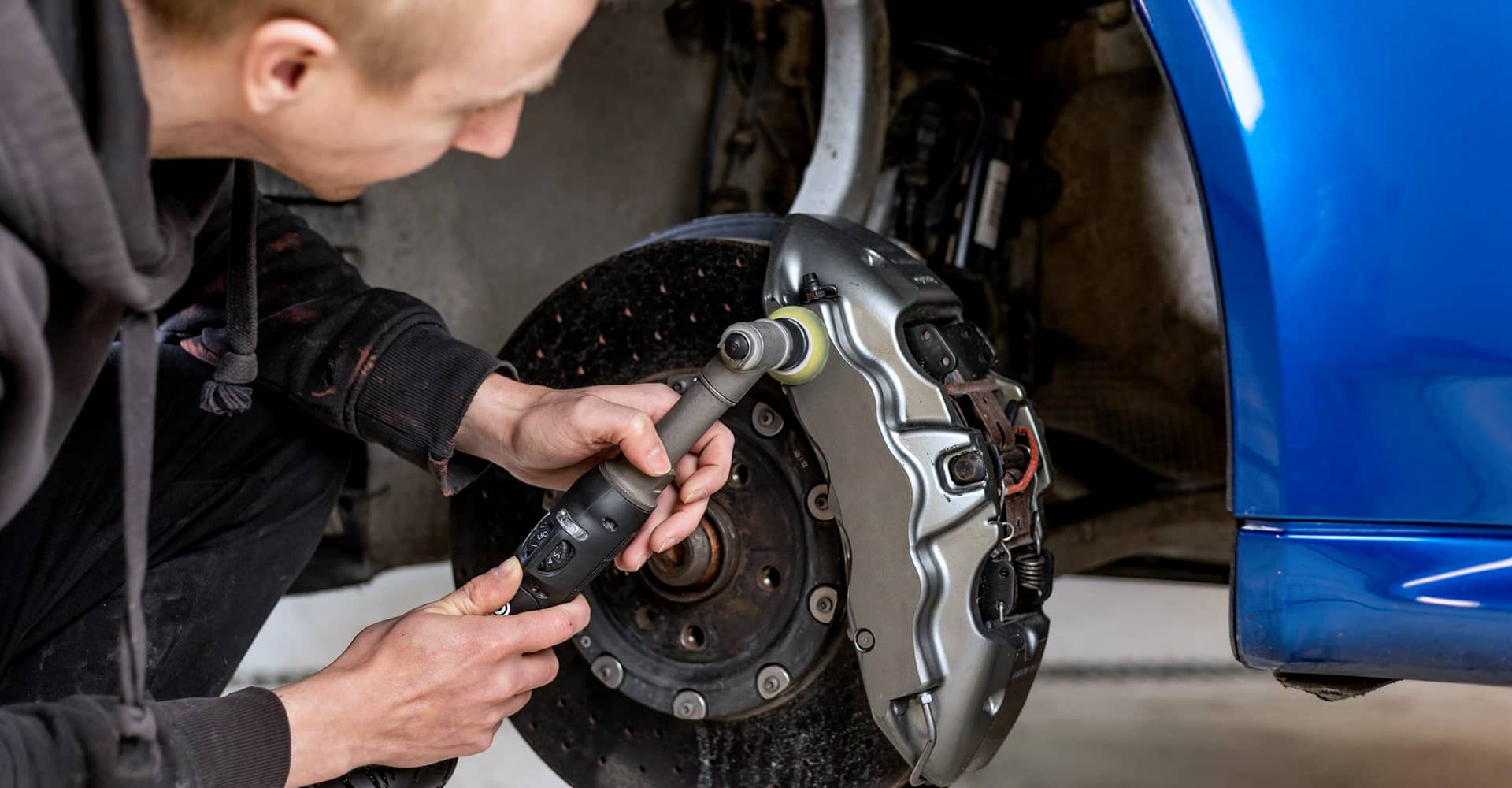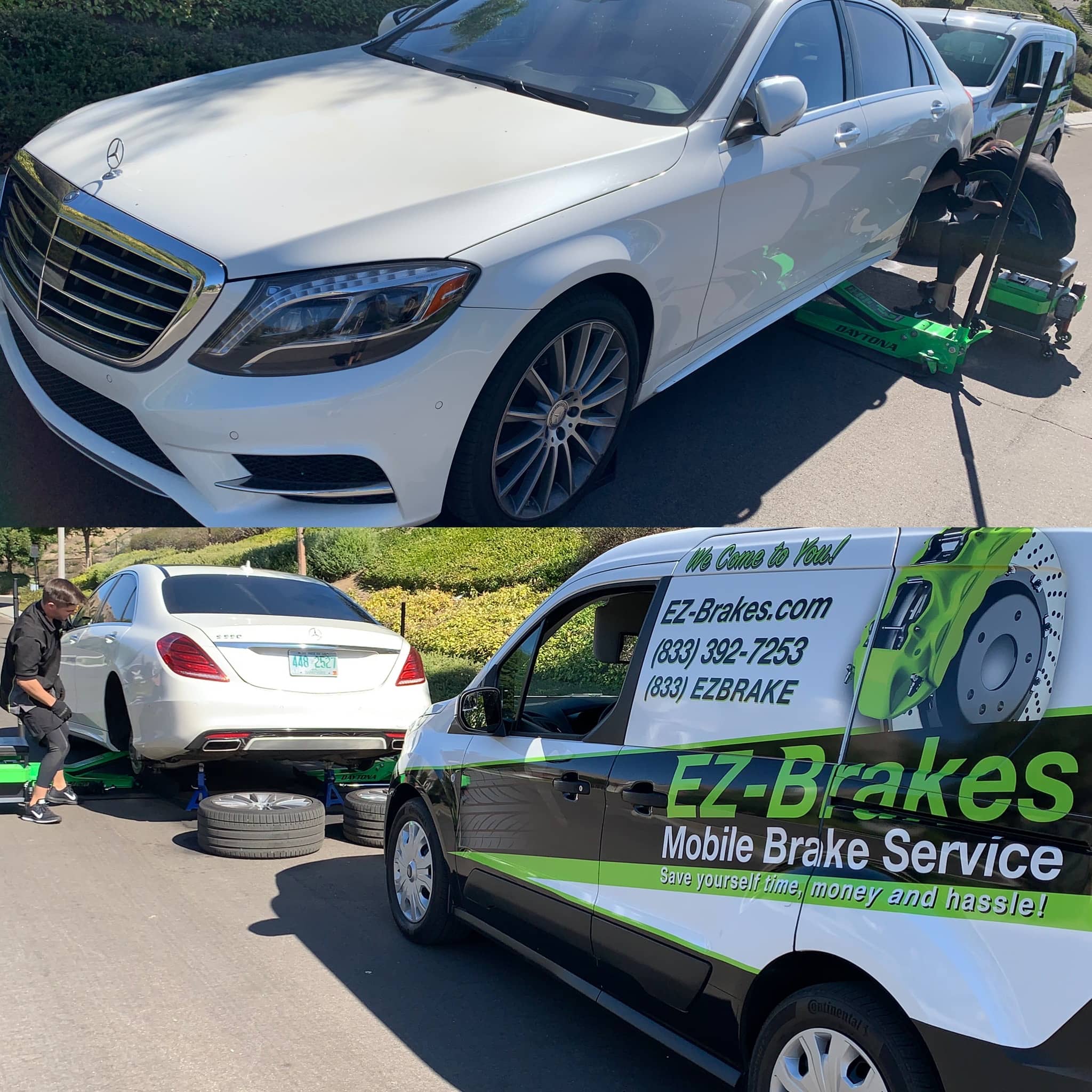Brake calipers play a vital role in your vehicle’s disc brake system, contributing directly to the safety of the vehicle. Understanding how the various components of a brake caliper work together will give you deeper insight into the importance of reliable braking, routine maintenance, and overall vehicle safety. In this post, we’ll explore the essential parts of a brake caliper, how they function, and how they contribute to effective braking. Let’s break it down to see how everything works together when you hit the brake lever.
What is a Brake Caliper and Why is it Important?
The brake caliper is a vital part of any motorcycle or car’s braking system. It acts as a clamp that fits over the brake disc (rotor) and holds the brake pads in position. When activated, the caliper uses hydraulic force to squeeze the pads against the side of the rotor, generating the friction material needed to bring your vehicle to a stop.
Key Functions of a Brake Caliper:
• Clamps the Brake Pads: Presses the pads against the rotating rotor.
• Distributes Brake Force: Helps balance pressure across both pads for uniform wear.
• Manages High Levels of Heat: Helps control the heat produced during braking for optimal durability and performance.
Key Components of a Brake Caliper
Brake calipers consist of multiple components, each working together for reliable braking performance.
1. The Housing of the Brake Caliper
The caliper housing is the structural base, built from different materials like cast iron or aluminum to handle high levels of heat. This durable body ensures compatibility with the rest of the braking system while securely enclosing internal components such as caliper pistons and caliper seals.
2. The Brake Pads
Friction material on the brake pads contacts the rotor to slow the vehicle. The friction surface must withstand extreme heat and pressure and is made from different materials including ceramic, metallic, or organic compounds.
• Material Composition affects braking performance, noise, and pad life.
• Brake pads are held in place by the caliper and must match the brake caliper tool specifications for proper compatibility.
3. The Caliper Pistons
When you press the brake lever, brake fluid flows from the master cylinder into the caliper, forcing the caliper pistons outward. These pistons push the pads against the rotor.
• Single piston calipers are common in budget vehicles and motorcycles, while differential bore calipers with multiple pistons provide better force distribution in performance vehicles.
• Pistons rely on caliper seals to prevent brake fluid leaks.
4. Brake Rotor Contact Area
This is the side of the rotor where the friction material from the brake pads meets the rotating disc. Constant contact creates heat and wear, requiring regular checks for durability and safety.
5. Slide Pins or Bolts
Slide pins allow the caliper to move slightly, ensuring balanced pressure across the brake pads. Lack of lubrication can cause common issues such as caliper sticking, uneven wear, or reduced effective braking.
How Do All These Components Work Together?
The brake caliper system is a coordinated mechanism where each part—from the brake fluid and master cylinder to the caliper pistons, friction material, and brake disc—performs a specific task to bring your vehicle to a controlled stop. Here’s a detailed look at how all these components interact seamlessly to deliver effective braking while maintaining the safety of the vehicle.
1. Hydraulic Pressure Activation
The process begins when the driver presses the brake lever (or pedal in a car), activating the master cylinder. The master cylinder generates hydraulic force by pushing brake fluid through the brake lines and into the brake caliper. This fluid pressure must be consistent and leak-free, as even a small drop in pressure—often caused by brake fluid leaks—can compromise braking performance.
Inside the caliper, this pressurized fluid moves the caliper pistons. Depending on the design, there could be a single piston or multiple pistons, such as in differential bore calipers. These pistons push the brake pads against the side of the rotor, creating the necessary contact for braking. The precision of this action is essential for maintaining vehicle safety, especially at high speeds or during sudden stops.
2. Friction and Heat Generation
Once the friction material on the pads contacts the rotating brake disc (rotor), kinetic energy from the moving vehicle is converted into heat through friction. This is the core mechanism of braking. However, this also produces high levels of heat, particularly during aggressive or prolonged braking, such as descending a steep hill or in performance driving.
To handle this, both the rotor and pads must be made from durable and heat-resistant materials. Inferior materials can wear down quickly, reducing braking effectiveness and increasing the risk of brake fade—a condition where the system temporarily loses stopping power.
3. Dissipation of Heat
The final critical stage is heat dissipation. Without it, components can overheat, warp, or degrade. The brake caliper housing, often made from different materials like aluminum or cast iron, helps disperse this heat away from the rotor and pads. Some calipers are designed with cooling fins or vents to improve airflow.
Advanced designs like differential bore calipers enhance this further by distributing braking pressure more efficiently, reducing localized heat buildup. This ensures reliable braking performance across various driving conditions, extending component life and preserving the safety of the vehicle.
Types of Brake Calipers and Their Components
Brake calipers come in different designs, each with unique components and advantages.
1. Fixed Brake Calipers
In fixed calipers, the caliper itself is stationary, and the pistons are located on both sides of the rotor. This design allows for more uniform pressure on the brake pads, resulting in better braking performance.
• Advantages: More consistent braking force and improved performance.
• Disadvantages: More complex design, higher cost, and heavier weight.
2. Floating Brake Calipers
Floating calipers, on the other hand, move slightly as the pistons apply pressure. They are usually found in smaller, more budget-friendly vehicles.
• Advantages: Lighter, less expensive, and easier to maintain.
• Disadvantages: Less precise braking compared to fixed calipers.
Common Brake Caliper Problems and How to Maintain Them
Maintaining your brake calipers is crucial for ensuring your vehicle’s braking system works at peak efficiency. Over time, brake calipers may develop issues that affect their performance. Some common problems include:
• Brake Pad Wear: Uneven wear can occur if the brake caliper is not functioning properly.
• Rust or Corrosion: Rust on the slide pins or pistons can cause sticking or poor braking performance.
• Fluid Leaks: Leaking hydraulic fluid can lead to reduced braking power.
Regular maintenance and timely replacement of worn components can help prevent these issues.
EZ-Brakes Mobile Brake Service: Convenient, On-the-Go Brake Caliper Repairs
EZ-Brakes offers a convenient and efficient mobile brake service, bringing expert brake repairs and maintenance, including brake caliper services, directly to your doorstep. Whether you’re at home, at work, or stranded on the road, our certified technicians arrive fully equipped to handle a wide range of brake services. From brake pad replacement and rotor resurfacing to complete brake caliper repairs, we ensure your vehicle’s braking system is safe and operational without the need to visit a traditional shop. Our mobile brake service is designed to save you time and provide high-quality brake services on your schedule. With EZ-Brakes, you can trust that you’re getting reliable, professional brake care, including brake caliper repairs, wherever you need it most.
FAQ About Brake Calipers
WHAT IS THE FUNCTION OF A BRAKE CALIPER?
A brake caliper holds the brake pads in place and applies pressure to the brake rotor to slow down or stop the vehicle. It is essential for the braking process to work efficiently.
HOW MANY PISTONS DOES A BRAKE CALIPER HAVE?
Brake calipers can have one piston (single-piston) or multiple pistons (multi-piston). The number of pistons impacts braking efficiency and performance, with multi-piston calipers offering more precise control.
HOW LONG DO BRAKE CALIPERS LAST?
Brake calipers generally last between 70,000 to 100,000 miles, but they can wear out faster if not properly maintained. Regular inspection is important to ensure their longevity.
WHAT CAUSES BRAKE CALIPERS TO FAIL?
Brake calipers may fail due to issues such as rust, fluid leaks, overheating, or worn-out pistons. Proper maintenance, including lubrication and regular inspections, can help prevent these problems.
CAN I REPLACE A BRAKE CALIPER MYSELF?
While it’s possible to replace a brake caliper yourself, it requires specialized knowledge and tools. If you’re unsure about the process, it’s best to have a professional mechanic handle it to ensure proper installation and safety.
Conclusion
The components of a brake caliper work in harmony to ensure your vehicle’s braking system operates safely and efficiently. From the brake pads to the pistons, each part plays a crucial role in creating the friction necessary to stop your car. Regular maintenance and understanding how these parts function together can help you avoid costly repairs and ensure your safety on the road. At EZ-Brakes, we’re committed to providing you with quality brake parts and services to keep your car running smoothly.





